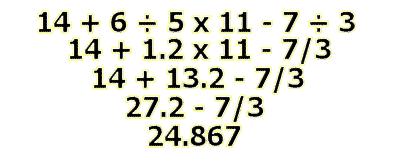

تاريخ الرياضيات

الاعداد و نظريتها

تاريخ التحليل

تار يخ الجبر

الهندسة و التبلوجي


الرياضيات في الحضارات المختلفة

العربية

اليونانية

البابلية

الصينية

المايا

المصرية

الهندية


الرياضيات المتقطعة

المنطق

اسس الرياضيات

فلسفة الرياضيات

مواضيع عامة في المنطق


الجبر

الجبر الخطي

الجبر المجرد

الجبر البولياني

مواضيع عامة في الجبر

الضبابية

نظرية المجموعات

نظرية الزمر

نظرية الحلقات والحقول

نظرية الاعداد

نظرية الفئات

حساب المتجهات

المتتاليات-المتسلسلات

المصفوفات و نظريتها

المثلثات


الهندسة

الهندسة المستوية

الهندسة غير المستوية

مواضيع عامة في الهندسة

التفاضل و التكامل


المعادلات التفاضلية و التكاملية

معادلات تفاضلية

معادلات تكاملية

مواضيع عامة في المعادلات


التحليل

التحليل العددي

التحليل العقدي

التحليل الدالي

مواضيع عامة في التحليل

التحليل الحقيقي

التبلوجيا

نظرية الالعاب

الاحتمالات و الاحصاء

نظرية التحكم

بحوث العمليات

نظرية الكم

الشفرات

الرياضيات التطبيقية

نظريات ومبرهنات


علماء الرياضيات

500AD

500-1499

1000to1499

1500to1599

1600to1649

1650to1699

1700to1749

1750to1779

1780to1799

1800to1819

1820to1829

1830to1839

1840to1849

1850to1859

1860to1864

1865to1869

1870to1874

1875to1879

1880to1884

1885to1889

1890to1894

1895to1899

1900to1904

1905to1909

1910to1914

1915to1919

1920to1924

1925to1929

1930to1939

1940to the present

علماء الرياضيات

الرياضيات في العلوم الاخرى

بحوث و اطاريح جامعية

هل تعلم

طرائق التدريس

الرياضيات العامة

نظرية البيان
Order of Operations
المؤلف:
المرجع الالكتروني للمعلوماتيه
المصدر:
www.almerja.com
الجزء والصفحة:
...
8-3-2017
1829
The order of operations is a very simple concept, but is vital to correctly doing math. It is simply the order in which you should perform certain operations (like addition) to get the right answer. Take this equation:

If you were to simply solve from left to right, the answer would be incorrect. Let's do that now. 14 + 6 = 20. Divide that by 5 to get 4. Multiply 4 times 11 to get 44. Subtract 7 to get 37, and divide by 3 to get 12.333. (THIS IS WRONG!)
The order of operations will allow you to solve this problem the right way. The order is this: Parenthesis, Exponents, Multiplication and Division, Addition and Subtraction. Always perform the operations inside a parenthesis first, then do exponents. After that, do all the multiplication and division from left to right, and lastly do all the addition and subtraction from left to right.
A popular way of remembering the order is by putting together the first letter of each word: PEMDAS. You can also create a little phrase to go along with this, like "Please Excuse My Dear Aunt Sally." Whatever you choose, make sure that you know all six steps of the order of operations very well.
Let's try solving that equation again, this time using PEMDAS.

Step 1) Parenthesis. There aren't any. Move on.
Step 2) Exponents. None. Keep going.
Step 3) Multiplication and Division. Go from left to right, so divide 6 by 5 to get 1.2, and multiply that by 11 to get 13.2. Don't forget to divide 7 by 3 to get 7/3 (about 2.33).
Step 4) Addition and Subtraction. From left to right, 14 + 13.2 = 27.2, subtract 7/3 and get your answer: about 24.867.

The whole idea is just to follow the rule: PEMDAS. Now we can try to solve one with parenthesis and exponents on the next page.
What if you are given an equation like the one below? Just simplify it in small steps, using the order of operations at all times.

Remember, the first step is Parenthesis. Look inside the parenthesis, where we have 6 x 2. That comes out to 12. We can then square 12 to get 144, making this equation easy to finsh.

 الاكثر قراءة في مواضيع عامة في الجبر
الاكثر قراءة في مواضيع عامة في الجبر
 اخر الاخبار
اخر الاخبار
اخبار العتبة العباسية المقدسة

الآخبار الصحية















 "المهمة".. إصدار قصصي يوثّق القصص الفائزة في مسابقة فتوى الدفاع المقدسة للقصة القصيرة
"المهمة".. إصدار قصصي يوثّق القصص الفائزة في مسابقة فتوى الدفاع المقدسة للقصة القصيرة (نوافذ).. إصدار أدبي يوثق القصص الفائزة في مسابقة الإمام العسكري (عليه السلام)
(نوافذ).. إصدار أدبي يوثق القصص الفائزة في مسابقة الإمام العسكري (عليه السلام) قسم الشؤون الفكرية يصدر مجموعة قصصية بعنوان (قلوب بلا مأوى)
قسم الشؤون الفكرية يصدر مجموعة قصصية بعنوان (قلوب بلا مأوى)


















